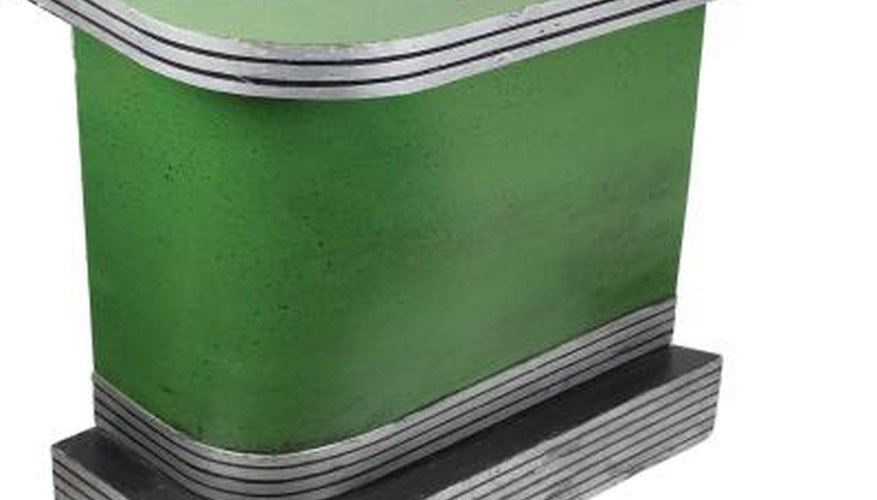Curved bars are challenging projects that should be planned completely before starting. If you want to build your own, as opposed to the custom-built bar picture shown, then use base kitchen cabinets made of strong plywood frames, capable of holding any weight of countertop you decide to order. Finished bar counters should be 42" high, so you may need to build a base for your 34.5" standard-height cabinets. Allow for 1 to 2" on the height of your countertop when installed, and your base then should equal 5.5" from the floor.
- Curved bars are challenging projects that should be planned completely before starting.
- If you want to build your own, as opposed to the custom-built bar picture shown, then use base kitchen cabinets made of strong plywood frames, capable of holding any weight of countertop you decide to order.

Plan out what size your bar can be within your available space. Plan for largest and smallest size scenarios. Go to your local home improvement store to the kitchen design department and ask for help on what cabinets can be ordered, prices, and wood styles and finishes. A kitchen designer can input the measurements into a design program and, using the wood maker of choice, can add in cabinets to fit the general size area you need. This service is free unless you hire their installation team. Cabinets come with drawers, doors or just open face with shelving systems. You will need at least one base 24" wide or more cabinet and two corner-styled 32 to 36" cabinets to start. All manufactured kitchen base cabinets come as 24" in depth, front to back measure. You also will need to allow for electrical sockets and plumbing which should be done before you lay down the foundation.
Build your foundation base as solid as possible within the measurements guideline. You can use brick and mortar to create the main base the size of the base cabinet bottoms. Enclose the brick base with a plywood-glued and nailed solid frame which extends just outside of where the base cabinets will slot in so there is a holding edge guide.
Add your middle cabinet first, especially if it will carry a bar sink. Then add side cabinets and adjust. Use fillers to cover any open areas in the back rounded section of the cabinets. Use fillers in the front to keep cabinets separated if there are doors and drawers which would interfere with their function when opened. Use finishing nails to lock the cabinets securely once the placements are done.
- Build your foundation base as solid as possible within the measurements guideline.
- Use fillers to cover any open areas in the back rounded section of the cabinets.
If you ordered a wood panel to cover the back ends of the cabinets, take a measurement of the placement and cut the panel to fit on a curve from one end to the other. Another option is to brick up the back which covers any ugly spots and openings as in the photograph above.
With the cabinets finished and secured, take a measurement of the countertop area based on the cabinets' placement. Allow for any overhang, splash areas, if there is a rise, and remember to allow for any electrical sockets. Now visit your local home improvement centre or a countertop store and choose what you want to have made. You will need to provide your measurements on a drawing in order to make a basic estimation. If the vendor is installing the countertop, they will come and do a professional measure first. The countertop usually takes from two to four weeks, depending on what type of countertop you ordered.
- If you ordered a wood panel to cover the back ends of the cabinets, take a measurement of the placement and cut the panel to fit on a curve from one end to the other.
- With the cabinets finished and secured, take a measurement of the countertop area based on the cabinets' placement.
TIP
If you are adding in plumbing and electricity, this should be done by certified professionals for you to avoid problems. Once the cabinets and countertop are installed, they will come back to finish out the hookups.
WARNING
If you have never done this before, rely on the advice of a professional designer who can help with details, the order of installations and ordering the right products. If you are doing the installations, be sure you have every step well planned.
